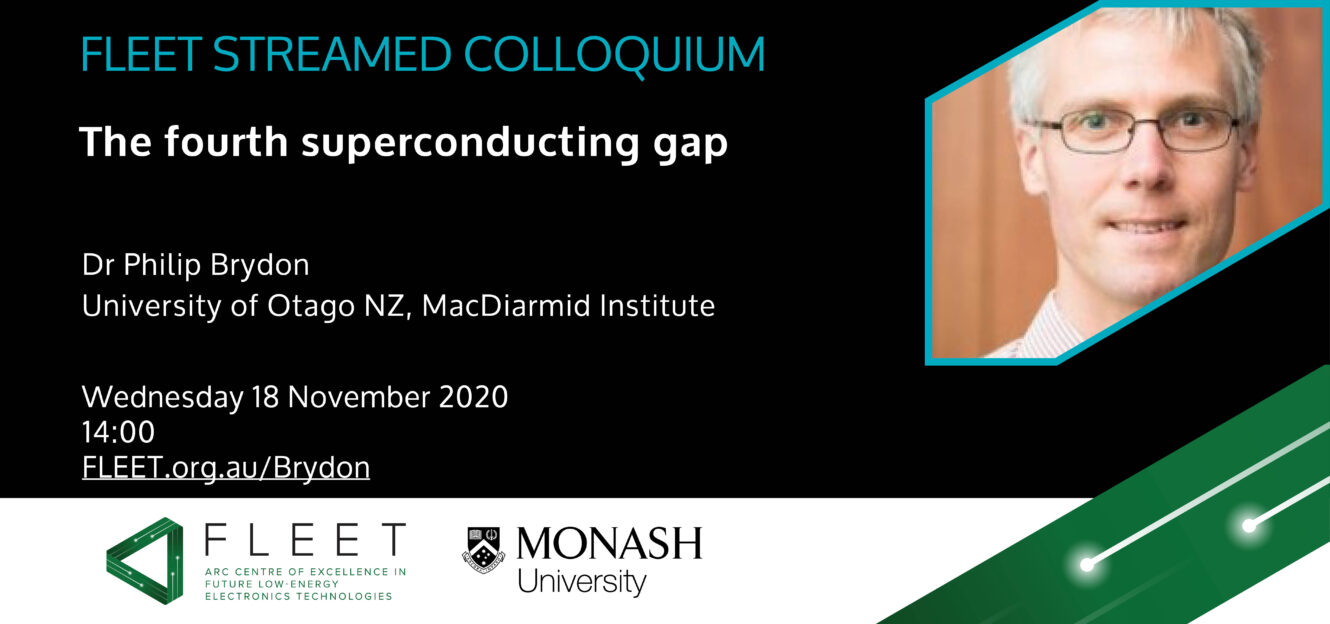-
18 Nov 2020
2:00 pm - 3:00 pm
Click to join us on Zoom | meeting ID 830 3640 1813 | password 1234
The fourth superconducting gap
Dr Philip Brydon, University of Otago NZ, MacDiarmid Institute
A key microscopic feature of a superconductor is the quasiparticle gap at the Fermi energy. It has long been believed that three possibilities exist for the gap: it can be nonzero across the entire Fermi surface, or it can vanish on points, or it can vanish on lines (so-called “nodes”).
These three cases leave characteristic signatures in thermodynamic quantities, and the form of the gap places significant constraints on the physics responsible for the superconductivity.
Dr Brydon will demonstrate that a fourth superconducting gap is possible, where the quasiparticle gap vanishes on a two-dimensional surface in momentum space, which are called Bogoliubov Fermi surfaces. These Fermi surfaces are energetically stable, topologically protected, and arise from interband pairing potentials. He proposes that the enigmatic superconducting state of Sr2RuO4 – still debated more than 25 years after its discovery – may realize this new electronic structure.
This talk is co-presented by Monash University School of Physics and Astronomy, and FLEET (the ARC Centre of Excellence in Future Low-Energy Electronics Technologies).
Dr Philip Brydon studies ‘unconventional’ superconductors, aiming to develop a microscopic description of these enigmatic but technologically important superconductors, and how this relates to their observable properties. After a PhD at the Australian National University, Philip Brydon’s international research career has taken him from Germany’s Max Planck Institute for Solid State Research (Stuttgart) and the Technical University of Dresden, to the University of Maryland (USA), before joining the University of Otago (New Zealand) in 2015. He has been an Associate Investigator at NZ’s MacDiarmid Institute since 2017. Superconductivity is a low-temperature quantum state of matter where electricity can flow without resistance. Despite intense study, we still have a poor understanding of the many “unconventional” superconductors.

